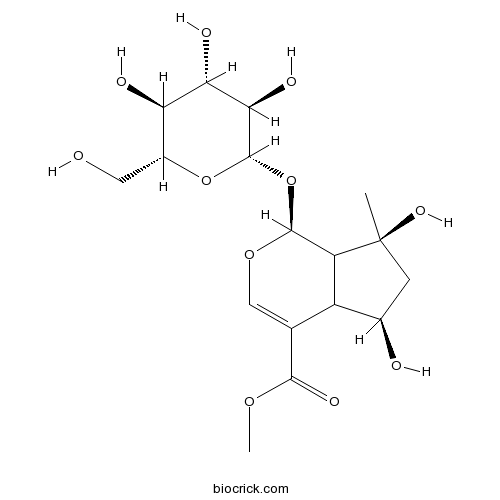Mussaenda pubescens
Mussaenda pubescens
1. The products in our compound library are selected from thousands of unique natural products; 2. It has the characteristics of diverse structure, diverse sources and wide coverage of activities; 3. Provide information on the activity of products from major journals, patents and research reports around the world, providing theoretical direction and research basis for further research and screening; 4. Free combination according to the type, source, target and disease of natural product; 5. The compound powder is placed in a covered tube and then discharged into a 10 x 10 cryostat; 6. Transport in ice pack or dry ice pack. Please store it at -20 °C as soon as possible after receiving the product, and use it as soon as possible after opening.
Natural products/compounds from Mussaenda pubescens
- Cat.No. Product Name CAS Number COA
-
BCN4187
Shanzhiside methylester64421-28-9
Instructions

Pre- and post-zygotic reproductive isolation between co-occurring Mussaenda pubescens var. alba and M. shikokiana (Rubiaceae).[Pubmed: 24299214]
Reproductive isolation is a fundamental requirement for speciation and includes several sequential stages. Few studies have determined the relative contributions of pre- and post-zygotic reproductive isolation in plants, especially between relative species with clear differentiation in flower form. To investigate the mechanisms responsible for reproductive isolation in sympatric Mussaenda pubescens var. alba and Mussaenda shikokiana (Rubiaceae) in Guangxi Province, China, we made observations of flowering phenology, patterns of insect visitation, and conducted pollination experiments, including artificial hybridization. The two species had overlapping flowering times and were pollinated by overlapping pollinators; however, their relative importance differed significantly with M. pubescens visited more commonly by bees and M. shikokiana more frequently by butterflies. Using vegetative and floral characters and molecular evidence based on nuclear ribosomal internal and external transcribed spacer regions we detected seven naturally occurring hybrids among a sample of approximately 125 individuals. Hybrids were characterized by morphologies that most closely resembled their maternal parents based on chloroplast evidence. Studies of artificially synthesized and natural hybrids demonstrated that hybrid seed had very low germination rates and naturally occurring hybrids exhibited pollen sterility. Post-zygotic reproductive isolating mechanisms play a primary role in limiting gene exchange between co-occurring species and maintaining species integrity in areas of sympatry.
Development of microsatellite markers from Mussaenda pubescens (Rubiaceae).[Pubmed: 23115137]
Microsatellite markers were developed and characterized in Mussaenda pubescens for further study of its levels of genetic diversity and changes in population genetic structure in reproductive character displacement and in shifts of sexual systems.
Cryptic dioecy in Mussaenda pubescens (Rubiaceae): a species with stigma-height dimorphism.[Pubmed: 20647224]
Evolutionary transitions from heterostyly to dioecy have been proposed in several angiosperm families, particularly in Rubiaceae. These transitions involve the spread of male and female sterility mutations resulting in modifications to the gender of ancestral hermaphrodites. Despite sustained interest in the gender strategies of plants, the structural and developmental bases for transitions in sexual systems are poorly understood.
Antiviral activities of medicinal herbs traditionally used in southern mainland China.[Pubmed: 15478204]
The aqueous extracts from 21 medicinal herbs traditionally used in southern mainland China were screened for antiviral activities against human herpes simplex virus type 1 (HSV-1) and human respiratory syncytial virus (RSV) using a cytopathic effect (CPE) reduction assay. Three extracts from Agrimonia pilosa, Pithecellobium clypearia and Punica granatum, respectively, showed anti-HSV-1 activity, which was possibly contributed by the polyphenolic compounds in the herbal extracts. Six of the extracts, from Blumea laciniata, Elephantopus scaber, Laggera pterodonta, Mussaenda pubescens, Schefflera octophylla and Scutellaria indica, respectively, exhibited anti-RSV activity with 50% inhibition (IC50) concentrations ranging from 12.5 to 32 microg/mL, and selective indices (SI) ranging from 11.2 to 40. In addition to polyphenolic compounds, other constituents present in these extracts may also contribute to their anti-RSV activity.
[Pharmacognostical studies on the stem and leaf of Mussaenda pubescens].[Pubmed: 12575124]
Morphological and microscopic chracteristics of Mussaenda pubescens Ait. f, a traditional Chinese medicine were described and illustrated with line drawings. TLC and UV analysis of the medicinal material were also undertaken. These studies provide referential information for identification and development of this medicinal material.
Recent advances on bioactive natural products from Chinese medicinal plants.[Pubmed: 9828038]
China has accumulated a rich body of empirical knowledge of the use of medicinal plants for the treatment of various diseases throughout its long history. Chemical studies on Chinese medicinal plants provide a valuable material base for the discovery and development of new drugs of natural origin. In this article recent chemical work on various Chinese medicinal plants is reviewed, including Mussaenda pubescens (Rubiaceae), Isatis indigotica (Cruciferae), Euphorbia fischeriana, and E. ebracteolata (Euphorbiaceae), and Stemona species (Stemonaceae). The structural diversity of the medicinal chemical constituents of the above plants is discussed.
Triterpenes and triterpenoid saponins from Mussaenda pubescens.[Pubmed: 9264607]
Two novel triterpenoid saponins, named mussaendosides U and V, together with one known saponin and four known triterpenes were isolated from the aerial parts of Mussaenda pubescens (Rubiaceae). The structures were determined on the basis of chemical analysis ad spectral methods. All these compounds were identified for the first time from the genus Mussaenda.


